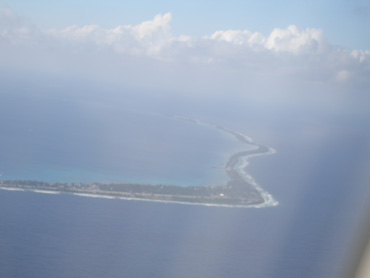This year the EAP Blog is participating in Blog Action Day. The organisers of the Day hope to encourage a global discussion on issues that are important to everyone. The theme for 2009 is 'climate change'. This is relevant to us as climate conditions, including temperature and humidity, have a real impact on the preservation and continued access of all archival material held anywhere in the world.
The climate both inside and outside a records store will influence the life of archives. A safe place will be secure, with suitable boxes and shelves and with controlled temperature and humidity. These things can be more easily regulated and managed than conditions outside the building. The climate of a particular region will, for example, influence rodent populations and mould growth. It will also dictate the likelihood of floods or bush fires.
Some EAP projects, such as the ten projects copying records in Indonesia, are working in hot, humid climates. Mould thrives in such conditions. Other projects, such as the 3 projects working in the Ukraine, will be less worried about mould. Everyone will be contending with ubiquitous environmental factors such as insects, possible water and fire damage, dust and dirt, sunlight, etc.
As climate patterns change so too will the environmental factors acting upon a particular archival collection. There are optimum temperature and humidity levels for the storage of different material types. While it's not always possible to achieve these, it's generally agreed that a stable environment is best. Wild fluctuations should be averted if possible.
And I couldn't really finish this post without mentioning the EAP project copying records from the Tuvalu National Archives. A noted reason for the endangerment of this material is the rising sea levels. The picture below shows just how slim the land mass of Tuvalu is.
